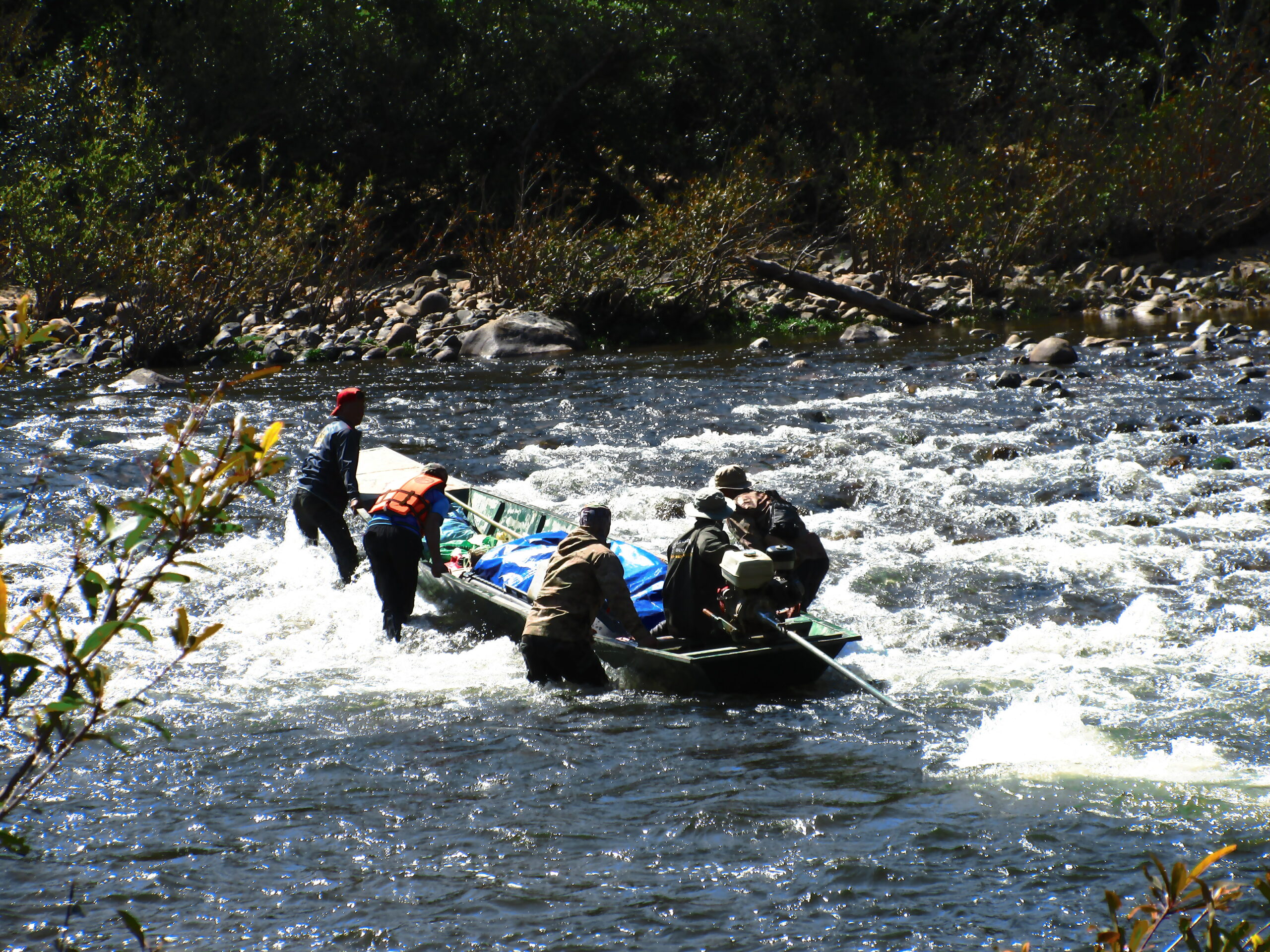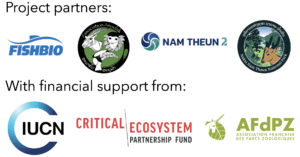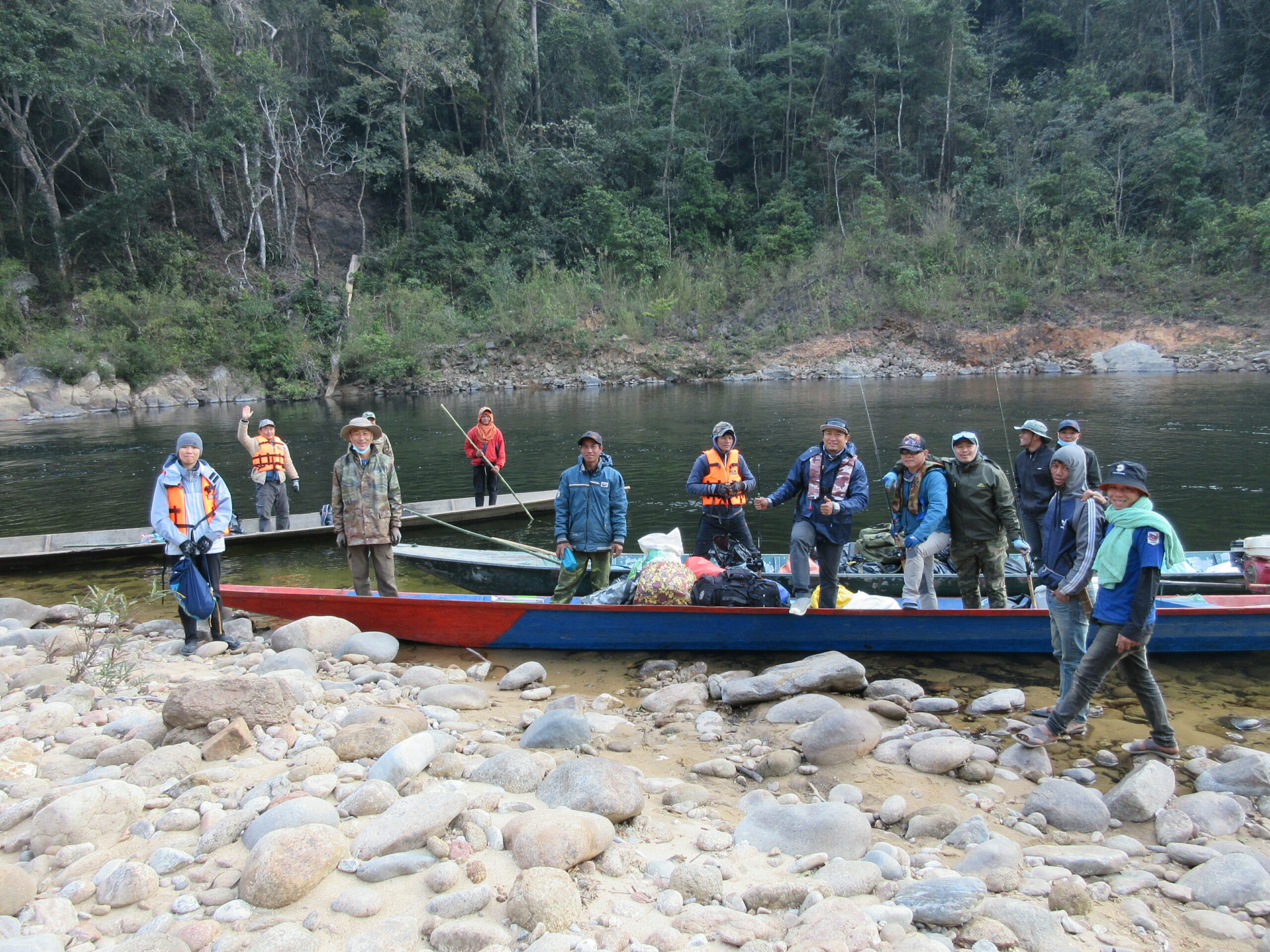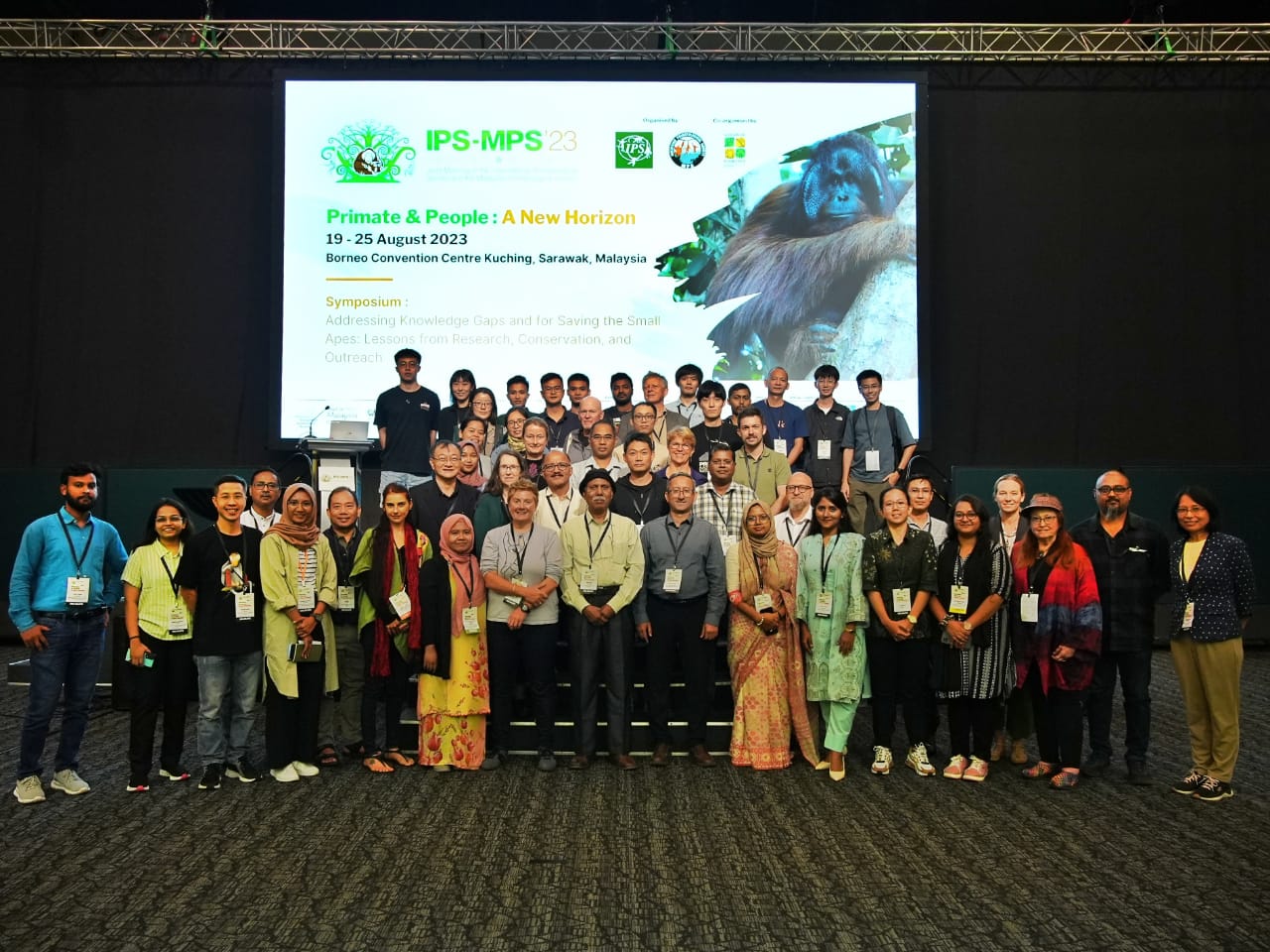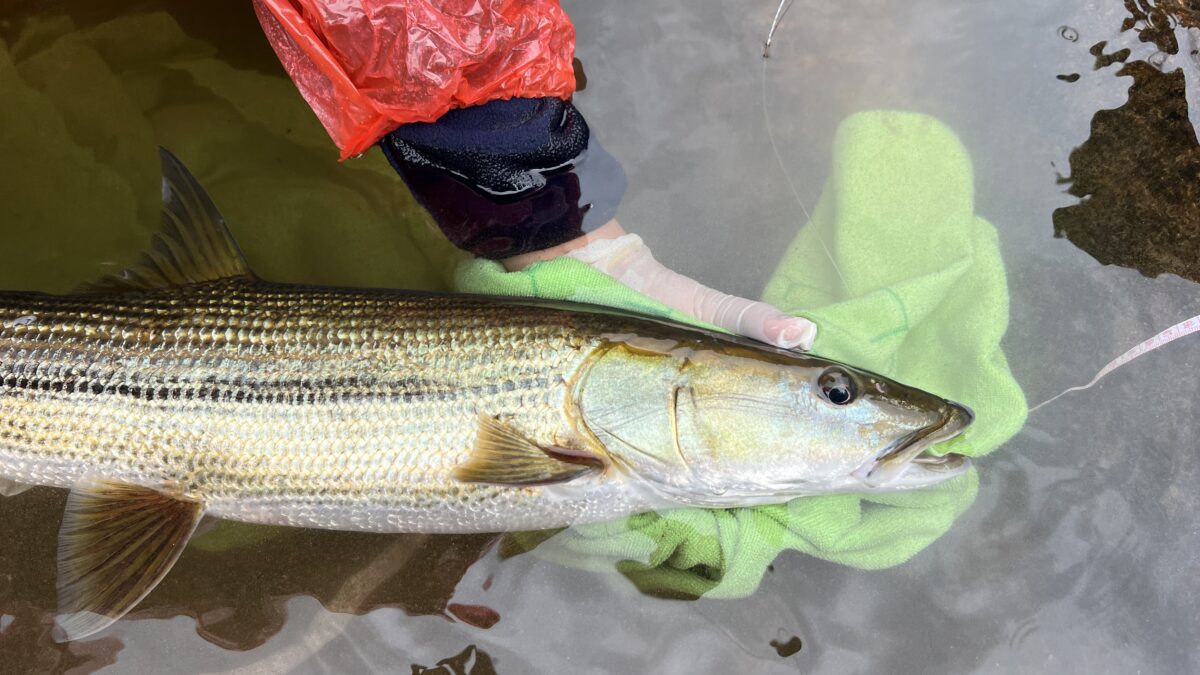
In line with Association Anoulak and Nakai – Nam Theun National Park Division (NNT NP) collaboration and joined commitment to biodiversity conservation and advance in scientific knowledge in NNT NP, since 2022, we initiated a pilot project in collaboration with technical partner FISHBIO (USA, Laos) to contribute to the conservation of the Endangered fish species Luciocyprinus striolatus (local name: Paa Kang).
Luciocyprinus striolatus is a species of endangered cyprinid native to parts of Laos and China. It is listed as Endangered on the IUCN Red List of Threatened Species (IUCN, 2021). The abundance of the species is thought to be rapidly declining due to various impacts from human activities including deforestation, infrastructure and hydropower development, low water levels, the use of destructive fishing gears, and climate change. The species is believed to be already extinct from China, which makes Laos the only country where the species can be protected. The distribution of the species in Laos remains little known, as well as the threats it faces where the species has been confirmed. There are currently only three locations in Laos where the species has been recorded recently in Oudomxay Province, in Khammouan Province (including Nakai-Nam Theun National Park) and in Bolikhamxay Province.
Survey team from Association Anoulak, FISHBIO, Nakai-Nam Theun National Park, and villagers in January 2023
When we initiated the project, the status of Luciocyprinus striolatus in Nakai – Nam Theun National Park remained unknown, therefore a research and conservation project was urgently needed to ensure the long-term conservation and survival of the species locally.
The overall aim of this project was to increase scientific knowledge and understanding of the distribution, life cycle and threats of this data-poor Endangered species (Luciocyprinus striolatus) in order to conserve and protect the population in Laos with future development of local conservation action plans.
The specific objectives of the projects were:
To conduct an assessment of the threats to Luciocyprinus striolatus in Nakai – Nam Theun National Park watershed
To conduct an assessment of the current presence/absence, distribution, abundance, and ecology of L. striolatus
The project included the following activities:
- Water sampling for environmental DNA analysis to detect the presence of the species
- Luciocyprinus striolatus individuals tagging for movement study
- Water quality sampling collected
- Qualitative assessment of threats on the species
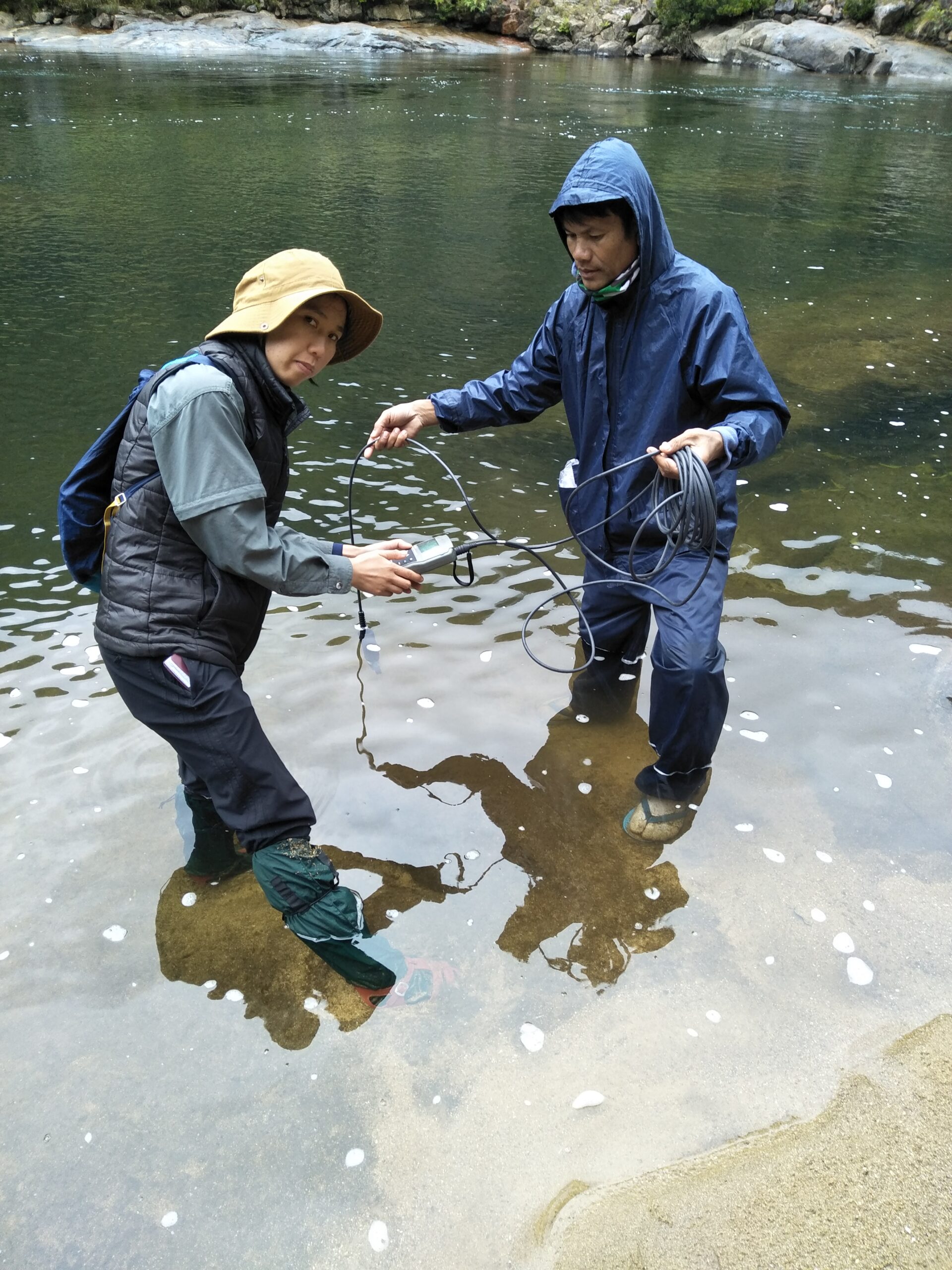
Water quality testing
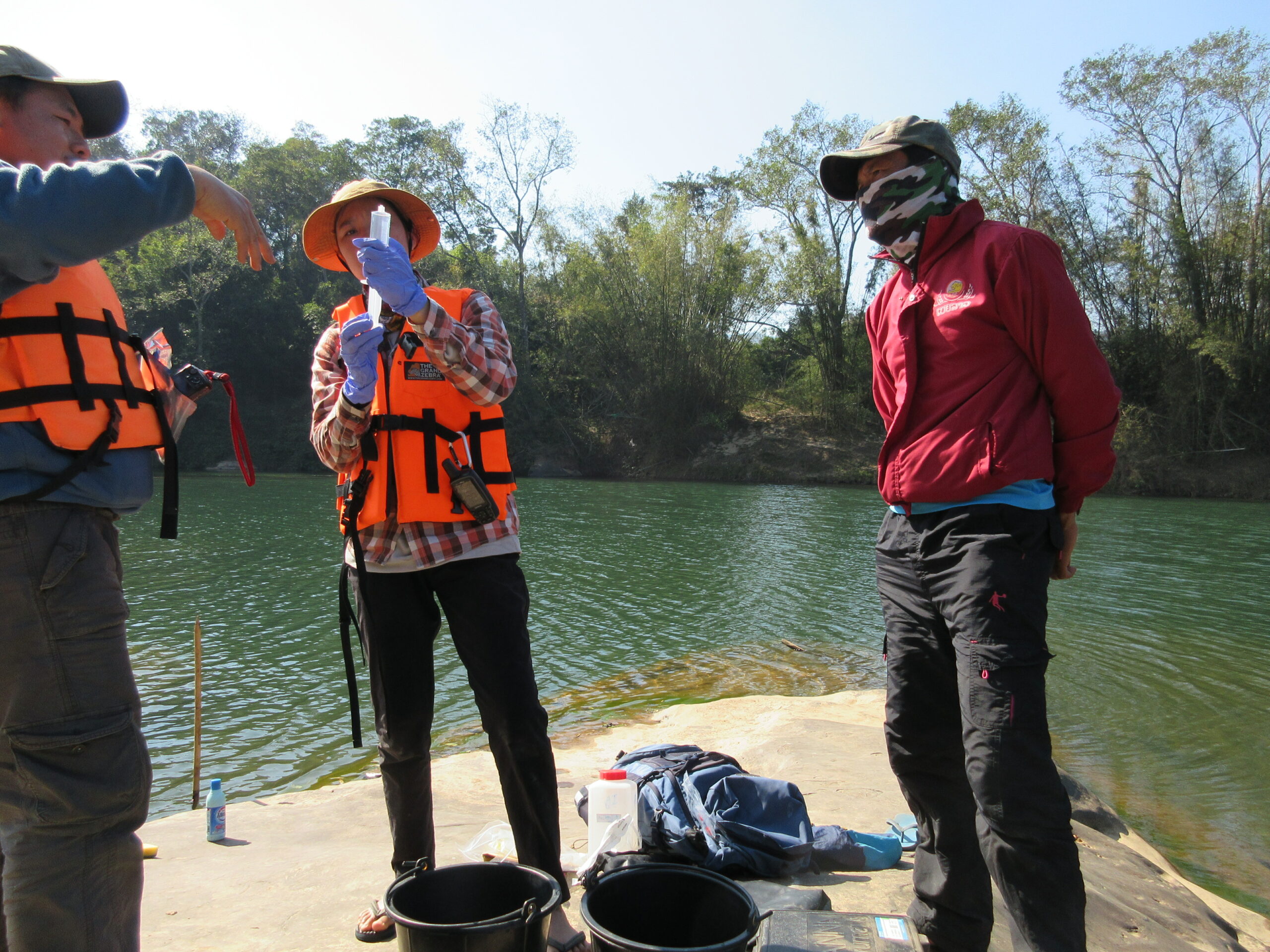
Collection of water samples for environmental DNA analysis and detection of L. striolatus
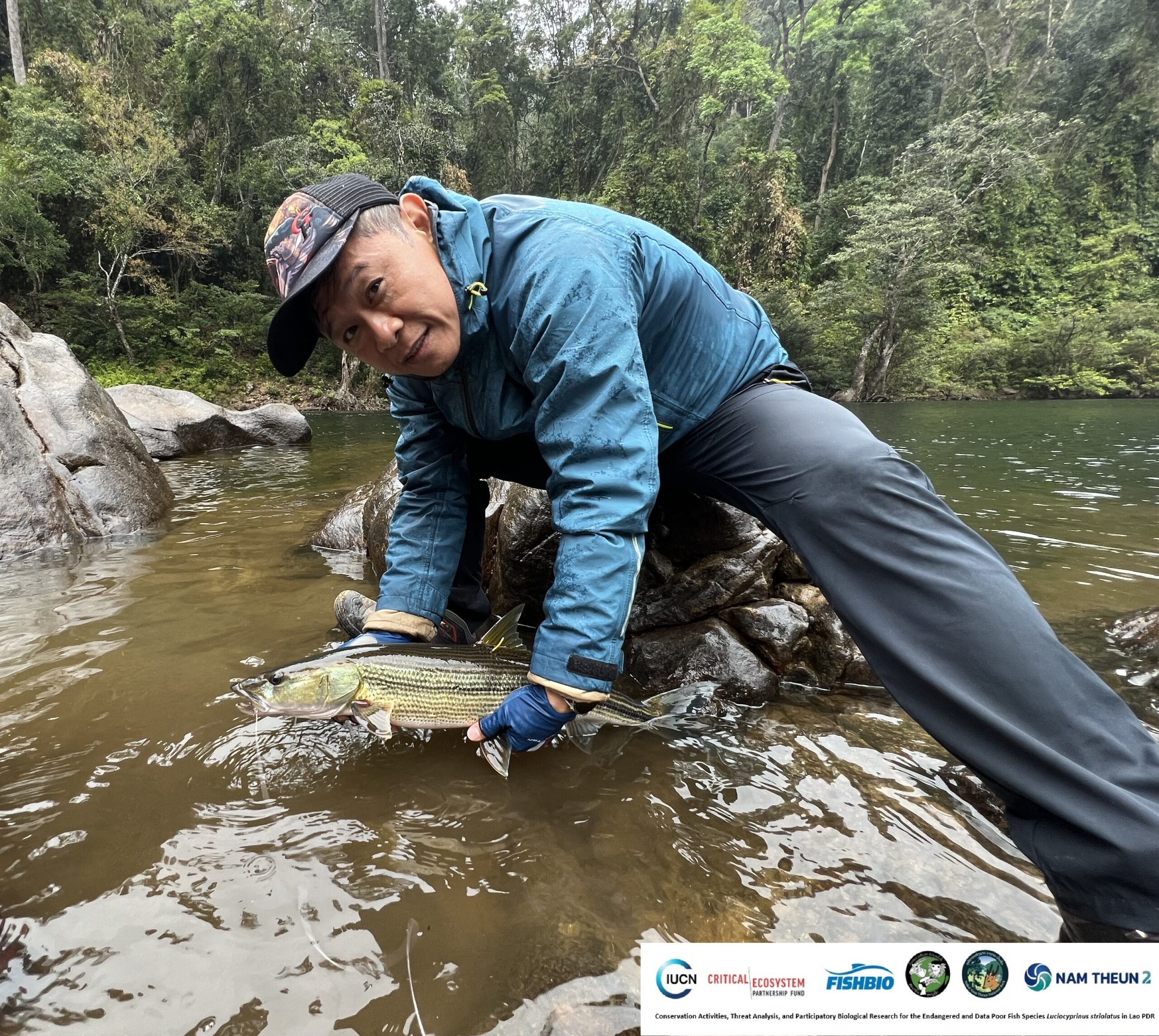
One of the three individual L. striolatus captured along the Nam Theun in January 2023 which was tagged and released for future movements monitoring in case of opportunistic recapture by local fishers
A total of 25 eDNA samples were collected along three main rivers (Nam Xot, Nam Theun, Nam Noy) in the Nakai-Nam Theun National Park in 2022-2023 (Figure 1). 72% of the water samples collected detected Luciocyprinus striolatus (i.e. 18 samples out of total 25 samples). The positive detections of the species came from three different sites: Nam Xot, Nam Theun, Nam Noy (Figure 1).
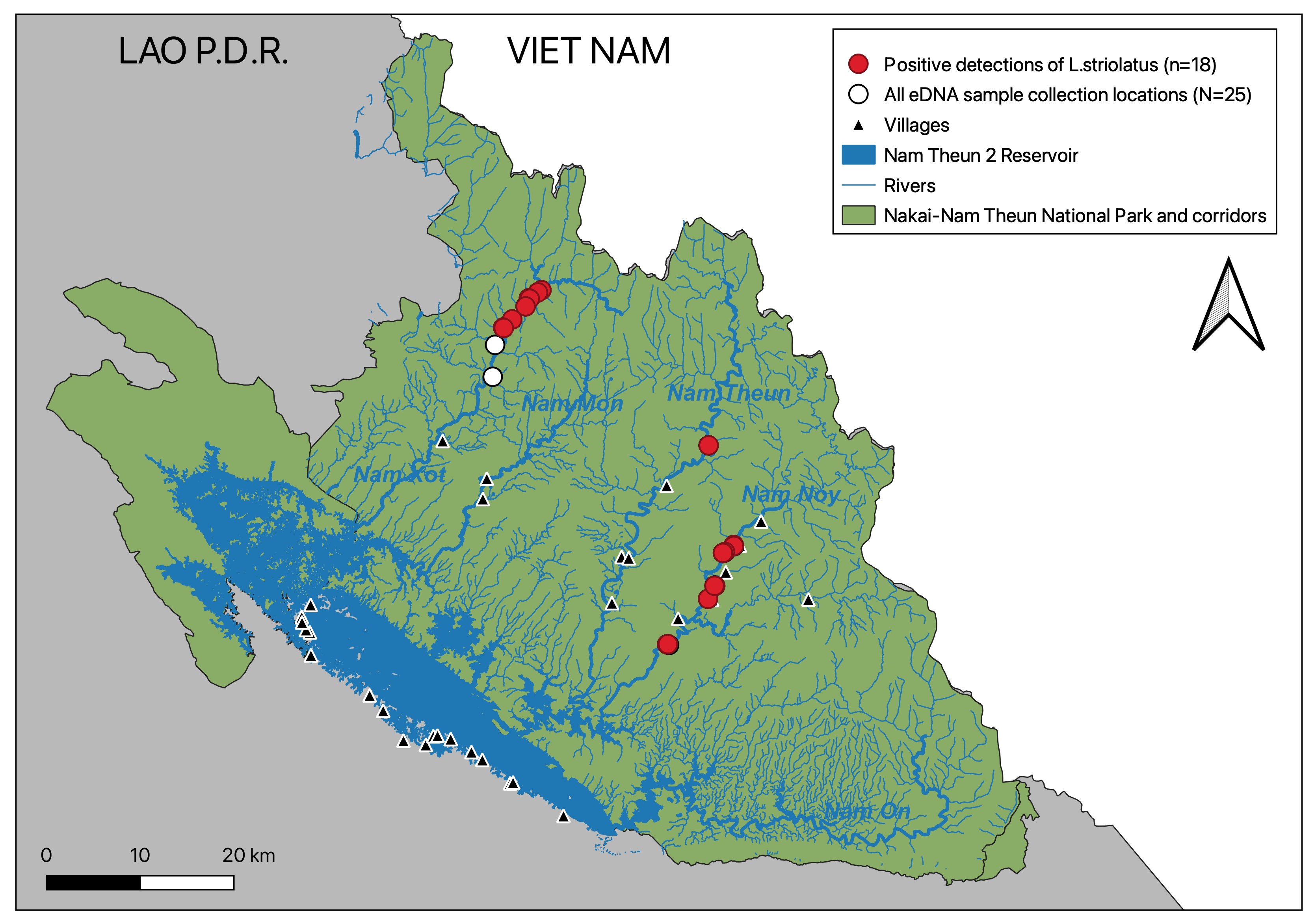
Figure 1: Locations of the 25 river water samples collected in Nakai-Nam Theun National Park in 2022-2023 for the detection of Luciocyprinus striolatus via environmental DNA analysis
The main threats identified on the population of Luciocypronus striolatus in Nakai-Nam Theun National Park are:
- Fishing of the species (as a target species or by-catch) by local villagers for subsistence food and/or local trade
- Depletion of prays of Luciocyprinus striolatus as a result of over-fishing and unregulated fishing by local communities for subsistence food and/or local trade
- Catch-and-Release tourism attraction and promotion within the national park (with no prior impact assessment and management plan)
- Seasonal droughts
- A lack of awareness on the species’ conservation value by local communities and local authorities
- A lack of conservation plan for the species for the national park
Luciocyprinus striolatus is under threat at all locations where it has been confirmed to occur in Laos: Nam Pak in Oudomxay Province, Xay Champhone in Bolikhamxay Province and Nakai-Nam Theun National Park in Khammouan Province.
However, Nakai-Nam Theun National Park represents the best location across the world for the long-term conservation of the species.
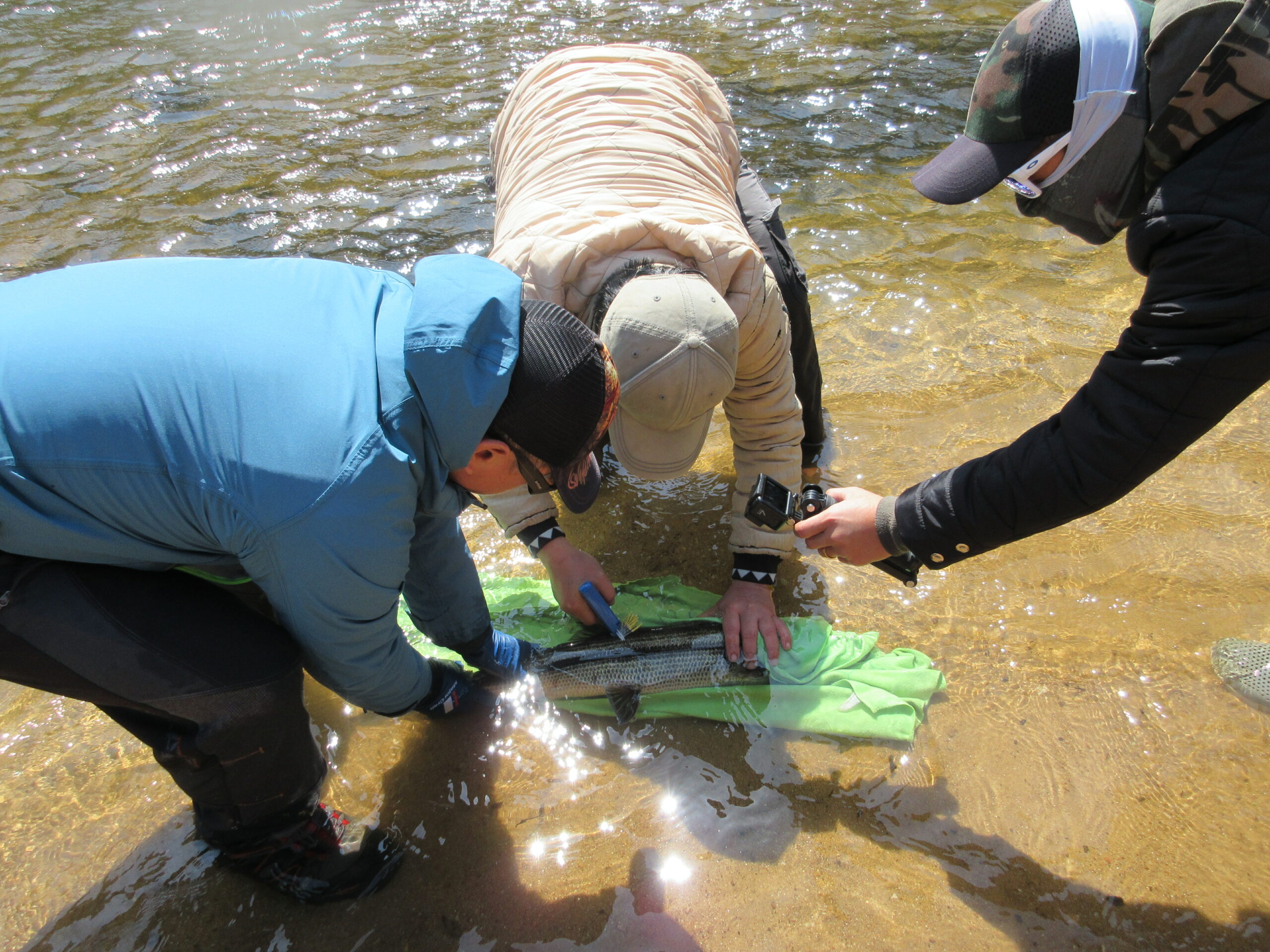
Tagging of one of the three individual L. striolatus captured along the Nam Theun in January 2023 which was tagged and released for future movements monitoring in case of opportunistic recapture by local fishers
Based on this pilot project, the final recommendations for the protection and conservation of L. striolatus in Nakai-Nam Theun National Park are as follows:
-
Conduct a follow-up study to understand reproduction cycle of the species in Nakai-Nam Theun (including key locations of reproduction and spawning)
-
Set-up community-based Fish Conservation Zones within the national park targeted at L. striolatus
-
The practice of catch-and-release sport fishing in Nakai-Nam Theun National Park should be avoided as the national park represents the best location across the world for the long-term conservation of the species. Conduct impact assessment of catch-and-release sport fishing and species abundance before authorizing and promoting this practice in Nakai-Nam Theun National Park.
-
Develop community-based ecotourism tours to observe the species in its natural habitat. Ecotourism project must directly benefit the local communities, to ensure their involvement in the protection of the species notably through community-based Fish Conservation Zones that are set-up for the protection of the species population
-
Conduct awareness raising for local authorities and local communities on the conservation value of the species

Tagging of one of the three individual L. striolatus captured along the Nam Theun in January 2023 which was tagged and released for future movements monitoring in case of opportunistic recapture by local fishers
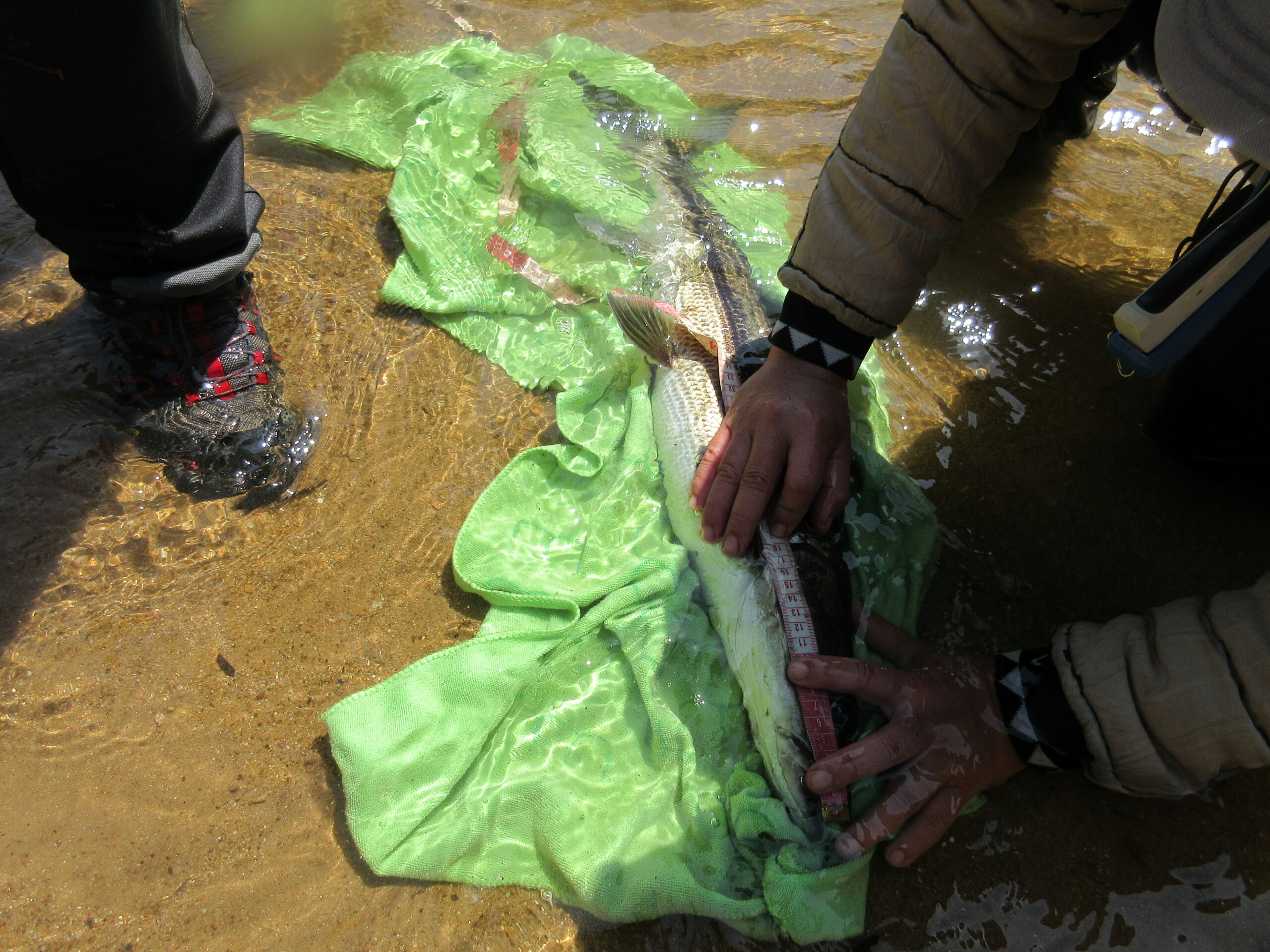
Measurements taken on one of the three individual L. striolatus captured along the Nam Theun in January 2023 which was tagged and released for future movements monitoring in case of opportunistic recapture by local fishers
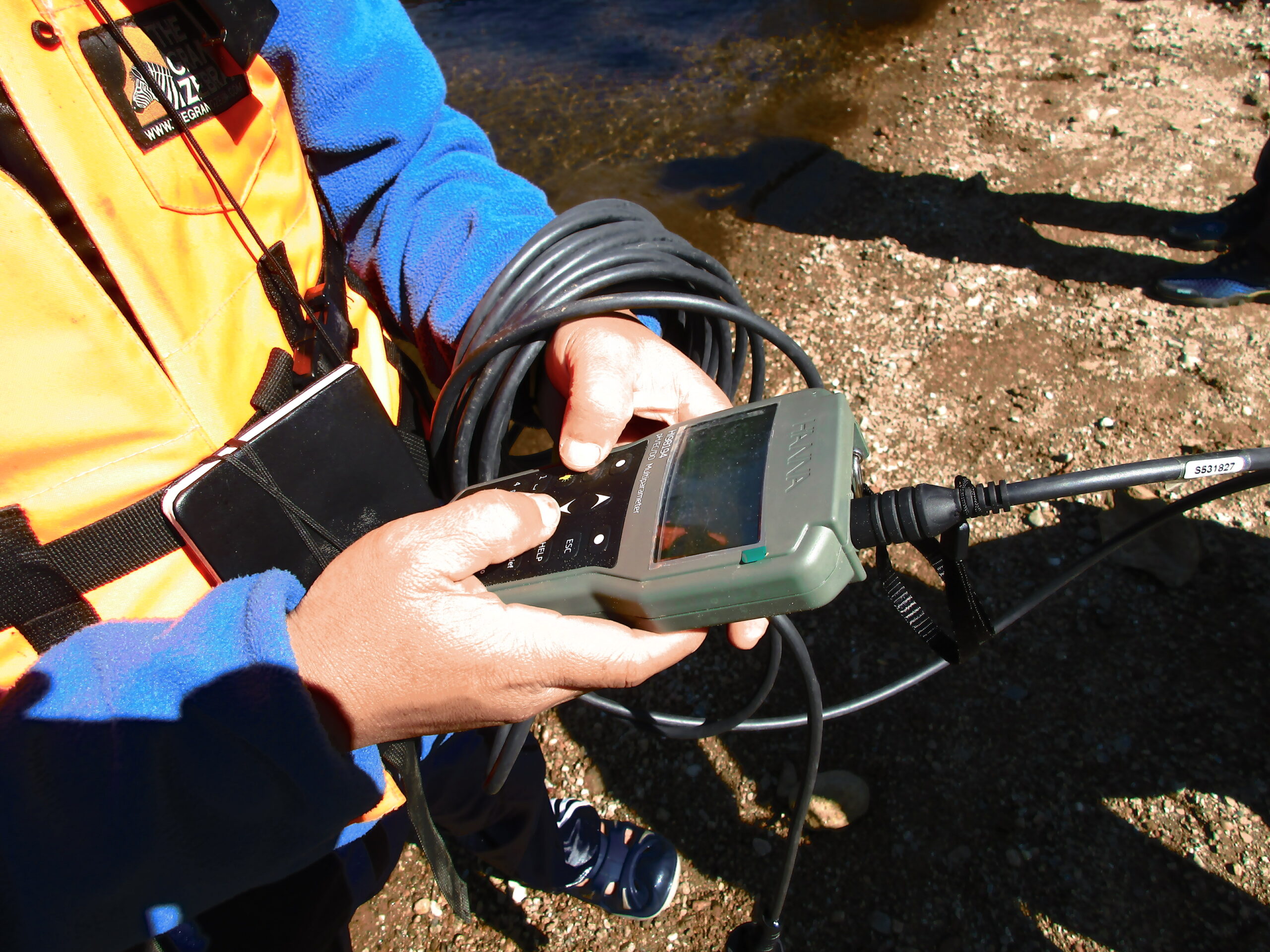
Water quality testing device (provided by Nam Theun 2 Power Company)
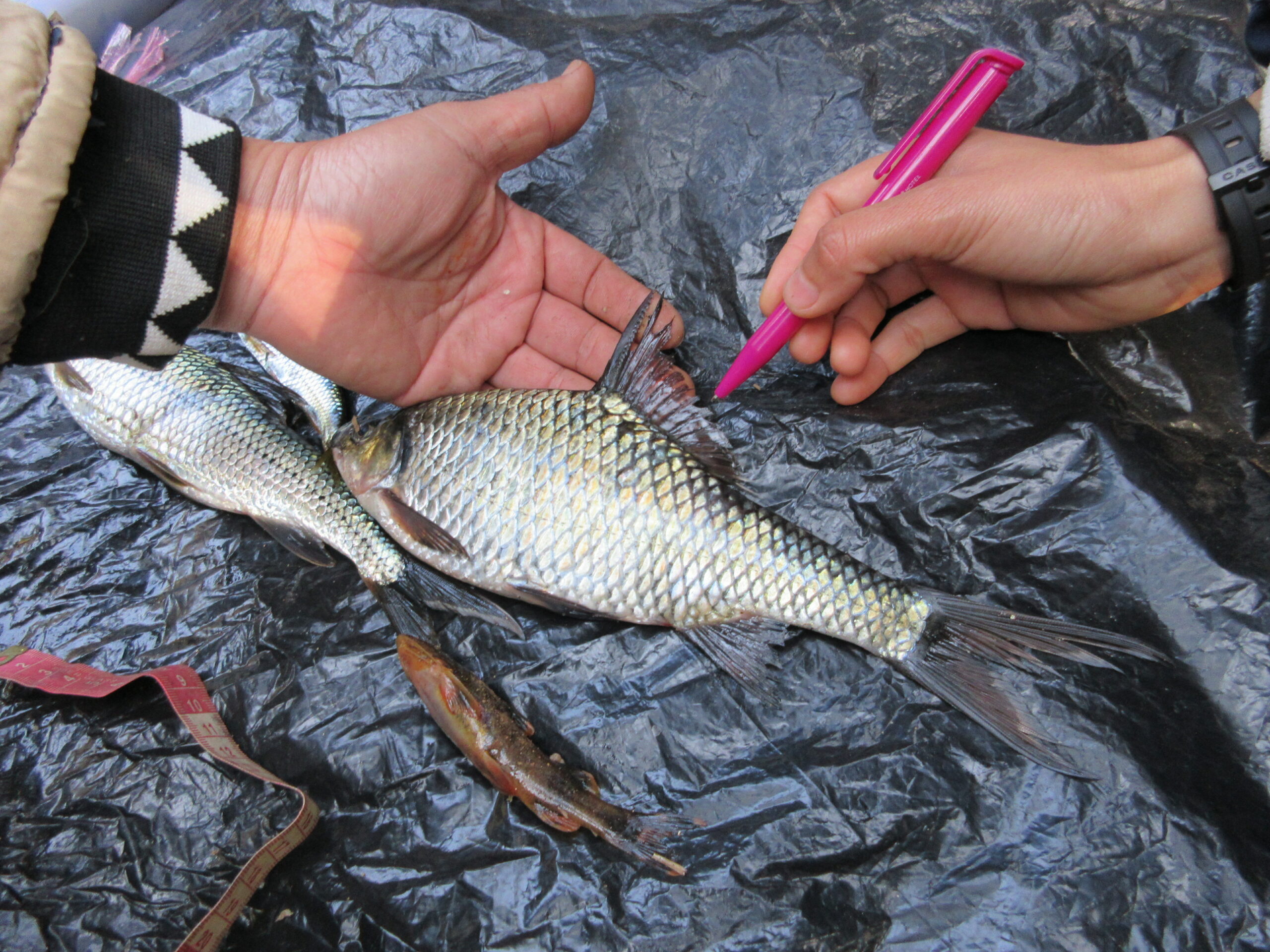
Training by Mr. Sinsamout (FISHBIO) to Association Anoulak team on the morphological characteristics of fishes
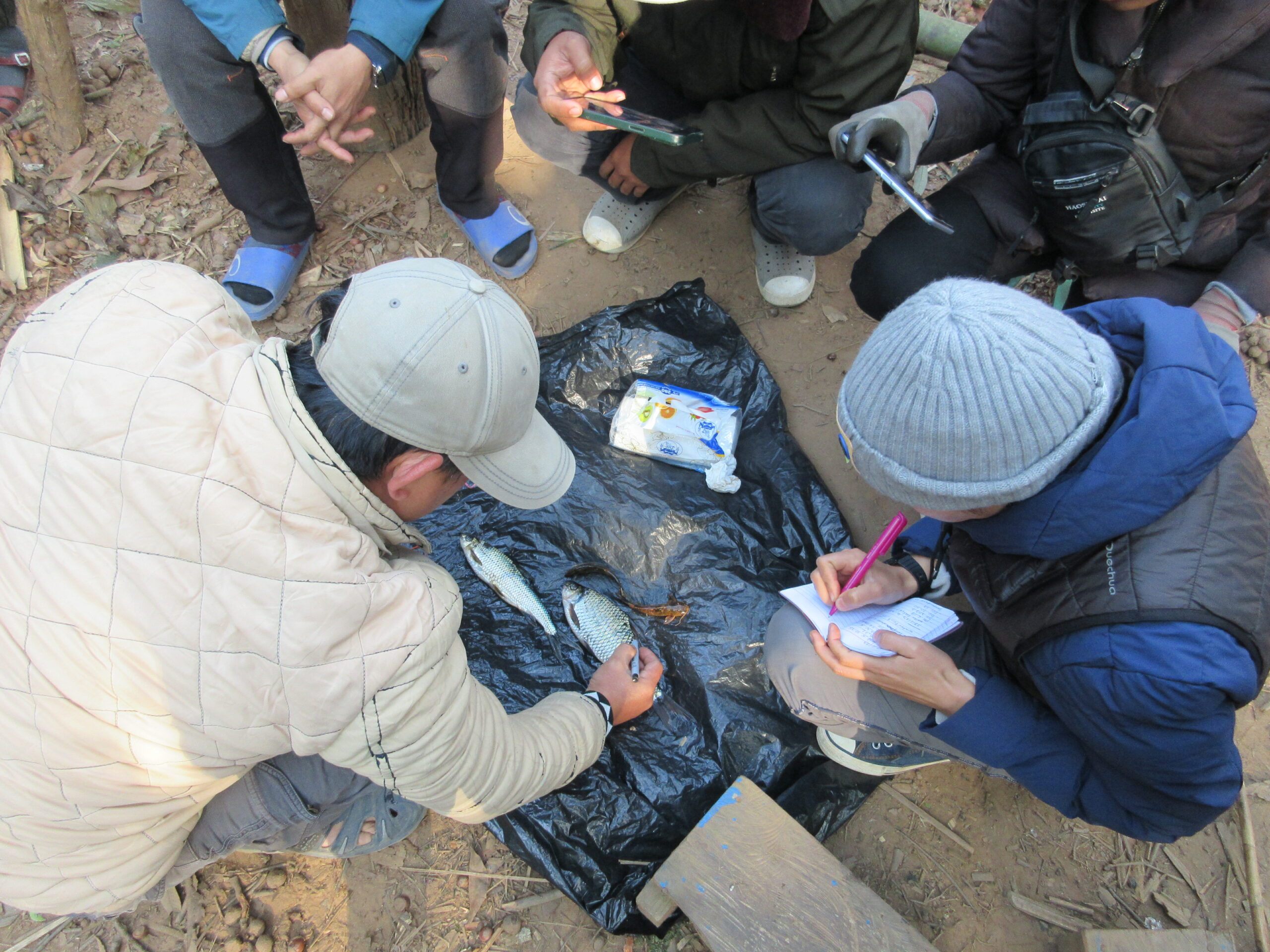
Training by Mr. Sinsamout (FISHBIO) to Association Anoulak team on the morphological characteristics of fishes
